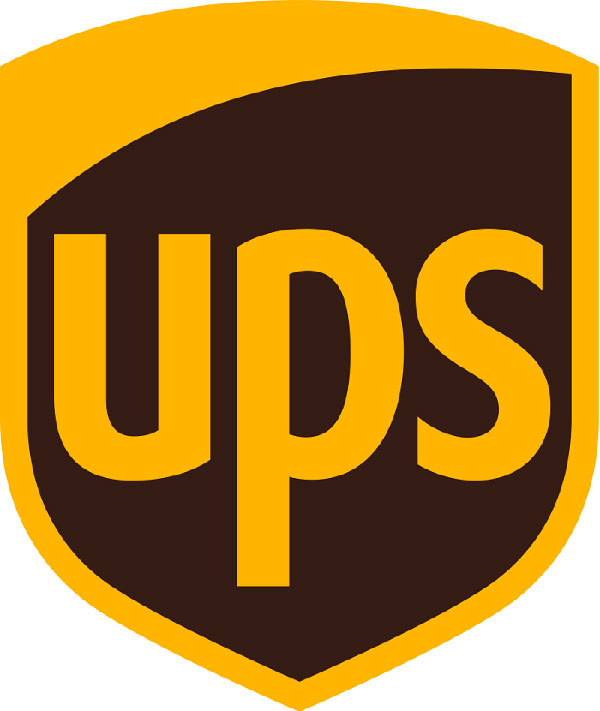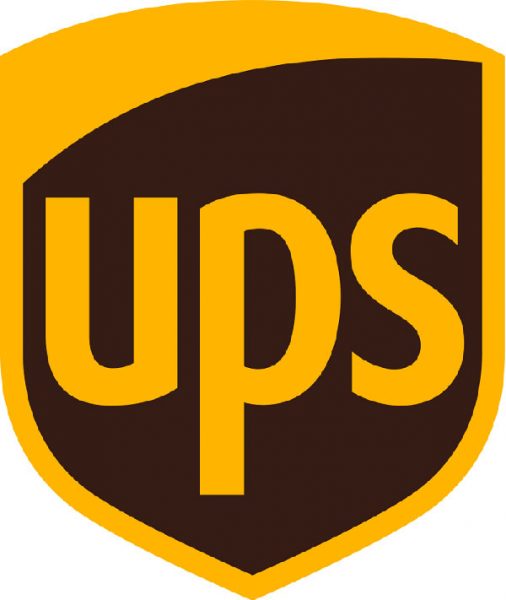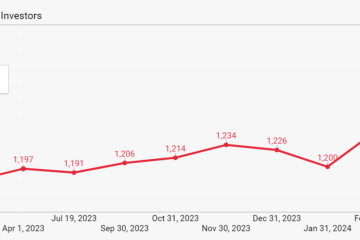- Reports 2Q18 EPS of $1.71, up 8.2%; Adjusted 2Q18 EPS of $1.94, up 23
- International Operating Profit up 8.4%; Adj. Operating Profit Climbed 15%
- Average Daily Exports Increased 9.5%, Led by Europe
- Supply Chain & Freight Operating Profit up 1.9%; Adjusted Operating Profit Rose 17%
- U.S. Domestic Revenue Increased 6.3% on Higher Base Pricing
- YTD Cash from Operations was $7.2B and Free Cash Flow Surged to $4.4B
- Reaffirms 2018 Adjusted EPS and Raises Free Cash Flow Guidance to $5B
UPS (NYSE:UPS) today announced second-quarter diluted earnings per share growth of 8.2%, to $1.71, and adjusted diluted earnings per share growth of 23%, to $1.94.

Second-quarter 2018 adjusted results exclude a pre-tax charge of $263 million, or $0.23 per share after-tax, due to transformation costs primarily related to the Voluntary Retirement Plan (VRP).
| Consolidated Results |
2Q 2018 |
Adjusted 2Q 2018 |
2Q 2017 |
| Revenue |
$17,456 M |
$15,927 M |
|
| Net Income |
$1,485 M |
$1,685 M |
$1,384 M |
| Diluted earnings per share |
$1.71 |
$1.94 |
$1.58 |
| EPS Growth |
8.2% |
23% |
For the total company in 2Q 2018:
- Consolidated revenue increased 9.6% to $17.5 billion, on growth across all segments.
- Average yield increased 4.6%, led by International and U.S. Deferred Air products.
- Net income increased 7.3% and adjusted net income was 22% higher than 2Q17.
- Year-to-date cash from operations was $7.2 billion.
- Free Cash Flow surged to $4.4 billion in the first half of the year, driven primarily by transformation initiatives that improved working capital.
- Year-to-date dividends per share increased by 10% to $1.6 billion and share repurchases were $511 million.
- The company has made capital expenditures of $2.8 billion in the first half of 2018.
U.S. Domestic Segment
The U.S. Domestic segment experienced strong revenue growth of 6.3%, driven by ecommerce demand and increased revenue per piece over the prior year. Operating profit was primarily reduced by planned increases in pension expense and cost for ongoing network projects.
|
2Q 2018 |
Adjusted 2Q 2018 |
2Q 2017 |
|
| Revenue |
$10,354 M |
$9,741 M |
|
| Operating profit |
$939 M |
$1,135 M |
$1,255 M |
- Revenue improved across all products, demonstrating robust market demand for UPS solutions.
- Revenue per piece increased 3.6% as higher base-rates and fuel surcharges offset headwinds from customer and product mix.
- Adjusted operating profit excludes transformation charges of $196 million, which lowered reported operating margin by 190 basis points.
International Segment
The International segment delivered its 14th consecutive quarter of currency neutral double-digit operating profit growth. The segment enjoyed its highest 2nd quarter operating profit ever, led by the Europe region.
|
2Q 2018 |
Adjusted 2Q 2018 |
2Q 2017 |
|
| Revenue |
$3,602 M |
$3,171 M |
|
| Operating profit |
$618 M |
$654 M |
$570 M |
International revenue increased 14%, driven by double-digit growth in Export and Domestic.
Daily Export shipments increased 9.5%, led by strong growth in Europe and the U.S.
Operating profit was $618 million and adjusted operating profit rose 15% to $654 million.
Adjusted operating profit excludes transformation charges of $36 million.
Supply Chain and Freight Segment
“The Supply Chain and Freight segment delivered another quarter of double-digit growth in revenue and adjusted operating profit,” continued Abney. “Our targeted growth strategies and improved efficiencies produced the segment’s best profit growth in its history.”
|
2Q 2018 |
Adjusted 2Q 2018 |
2Q 2017 |
|
| Revenue |
$3,500 M |
$3,015 M |
|
| Operating profit |
$216 M |
$247 M |
$212 M |
For the Supply Chain and Freight segment in 2Q 2018:
- Revenue increased 16% to $3.5 billion, the business units are focused on leveraging UPS solutions to better serve middle-market customers.
- The Forwarding business led all units with 23% revenue growth, as revenue management initiatives drove top-line improvement.
- UPS Freight revenue increased 13% on higher pricing and tonnage gains.
- Operating profit was $216 million and adjusted operating profit was up 17% to $247 million.
- Adjusted operating profit excludes transformation charges of $31 million.
Outlook
The company provides guidance on an adjusted (non-GAAP) basis because it is not possible to predict or provide a reconciliation reflecting the impact of future pension mark-to-market adjustments or other unanticipated events, which would be included in reported (GAAP) results and could be material.
“UPS is focused on executing our strategic imperatives for improved efficiency and high-quality growth,” said Richard Peretz, UPS’s chief financial officer. “We remain confident in our ability to achieve our full-year adjusted earnings per share target.”
UPS expects 2018 adjusted diluted earnings per share in a range of $7.03 to $7.37.
The company raises 2018 free cash flow target to $5.0 billion.
The effective tax rate should be in a range of 23% to 24% for the remainder of the year.
Capital expenditures in 2018 are planned between $6.5 billion and $7.0 billion.
Reconciliation of GAAP and non-GAAP Financial Measures
We supplement the reporting of our financial information determined under generally accepted accounting principles (“GAAP”) with certain non-GAAP financial measures, including, as applicable, “as adjusted” operating profit, operating margin, pre-tax income, net income and earnings per share. The equivalent measures determined in accordance with GAAP are also referred to as “reported” or “unadjusted.” Additionally, we periodically disclose free cash flow, free cash flow excluding discretionary pension contributions, as well as currency-neutral revenue, revenue per piece and operating profit.
We consider quantitative and qualitative factors in assessing whether to adjust for the impact of items that may be significant or that could affect an understanding of our ongoing financial and business performance or trends. Examples of items for which we may make adjustments include but are not limited to: amounts related to mark-to-market gains or losses (non-cash); settlement of contingencies; gains or losses associated with mergers, acquisitions, divestitures and other structural changes; charges related to restructuring programs; asset impairments (non-cash); amounts related to changes in tax regulations or positions; pension and postretirement related items; and debt modifications.
We believe that these non-GAAP measures provide additional meaningful information to assist users of our financial statements in understanding our financial results, cash flows and assessing our ongoing performance because they exclude items that may not be indicative of, or are unrelated to, our underlying operations and may provide a useful baseline for analyzing trends in our underlying businesses. Management uses these non-GAAP financial measures in making financial, operating and planning decisions. We also use certain of these measures for the determination of incentive compensation award results.
Non-GAAP financial measures should be considered in addition to, and not as an alternative for, our reported results prepared in accordance with GAAP. Our non-GAAP financial information does not represent a comprehensive basis of accounting. Therefore, our non-GAAP financial information may not be comparable to similarly titled measures reported by other companies.
Transformation & Other
We supplement the presentation of our operating profit, operating margin, pre-tax income, net income and earnings per share with similar non-GAAP measures that exclude the impact of transformation strategy costs. We believe this adjusted information provides important supplemental information that provides useful comparison of year-to-year financial performance without considering the short-term impact of transformation impacts. We evaluate the performance of our businesses on an adjusted basis.
Currency-Neutral Revenue, Revenue per Piece and Operating Profit
We supplement the reporting of our revenue, revenue per piece and operating profit with similar non-GAAP measures that exclude the period-over-period impact of foreign currency exchange rate changes and hedging activities. We believe currency-neutral revenue, revenue per piece and operating profit information allows users of our financial statements to understand growth trends in our products and results. We evaluate the performance of our International Package and Supply Chain and Freight businesses on a currency-neutral basis.
Currency-neutral revenue, revenue per piece and operating profit are calculated by dividing current period reported U.S. dollar revenue, revenue per piece and operating profit by the current period average exchange rates to derive current period local currency revenue, revenue per piece and operating profit. The derived current period local currency revenue, revenue per piece and operating profit are then multiplied by the average foreign exchange rates used to translate the comparable results for each month in the prior year period (including the period over period impact of foreign currency revenue hedging activities). The difference between the current period reported U.S. dollar revenue, revenue per piece and operating profit and the derived current period U.S. dollar revenue, revenue per piece and operating profit is the period over period impact of currency fluctuations.
Free Cash Flow
We supplement the reporting of cash flows from operating activities with free cash flow and free cash flow excluding discretionary pension contributions, non-GAAP liquidity measures. We believe free cash flow is an important indicator of how much cash is generated by regular business operations and we use it as a measure of incremental cash available to invest in our business, meet our debt obligations and return cash to shareowners. We calculate free cash flow as cash flows from operating activities less capital expenditures, proceeds from disposals of property, plant and equipment, and plus or minus the net changes in finance receivables and other investing activities.




